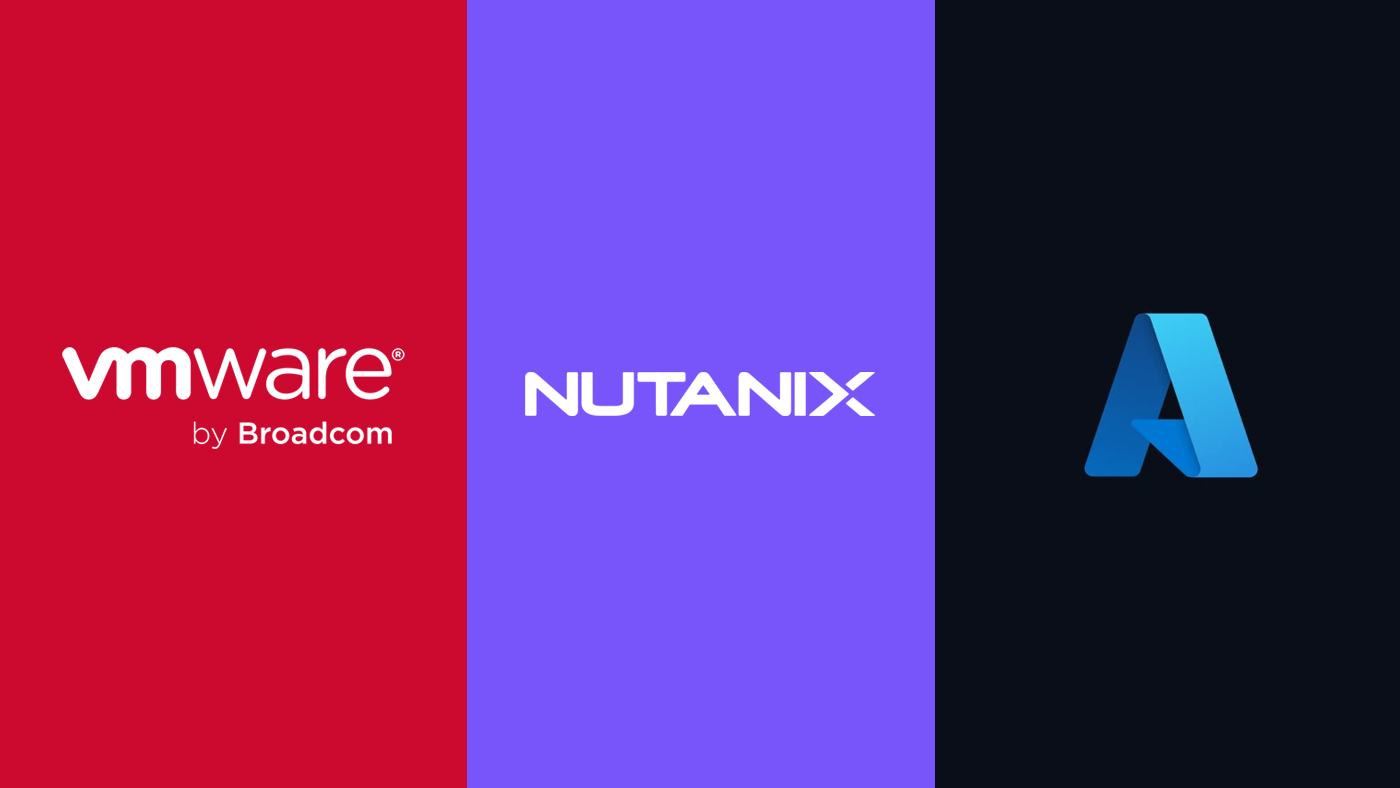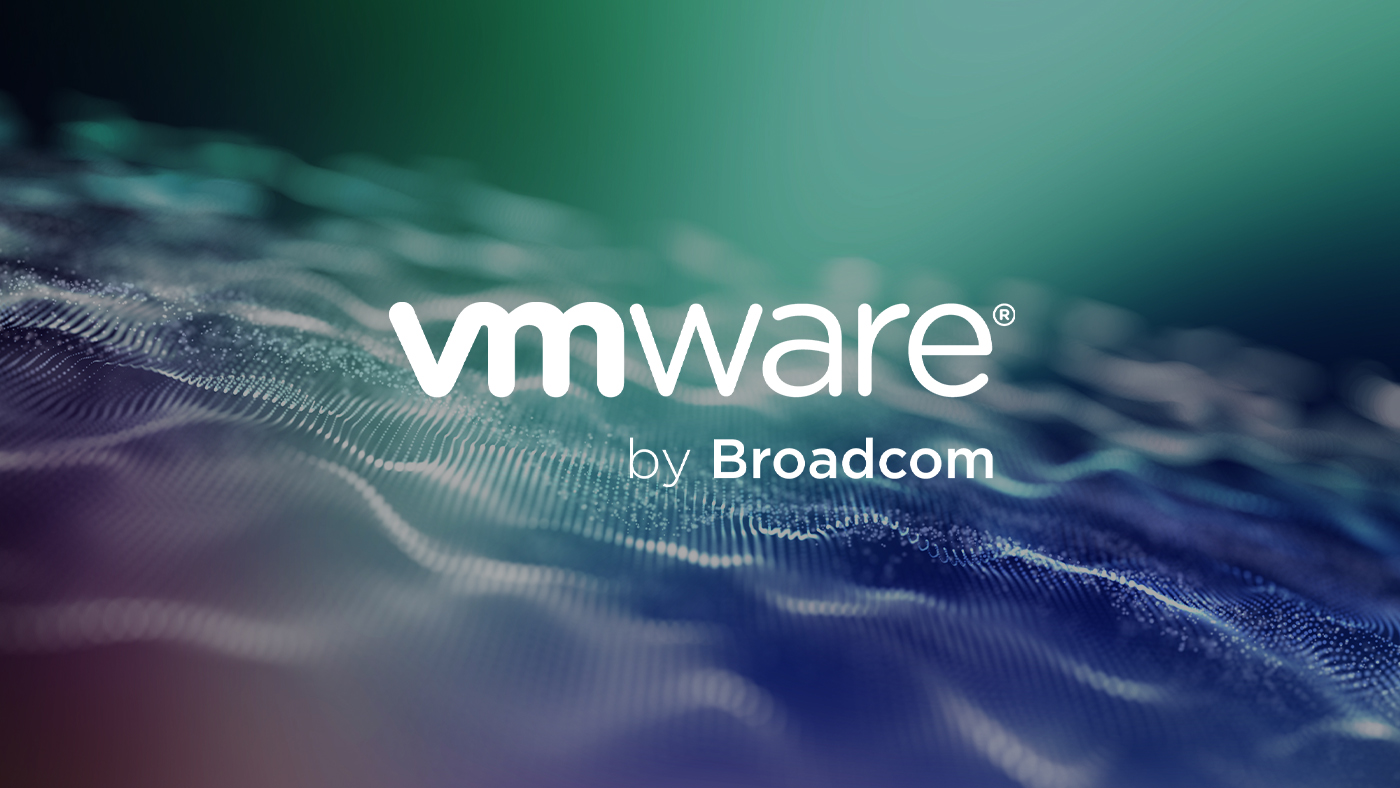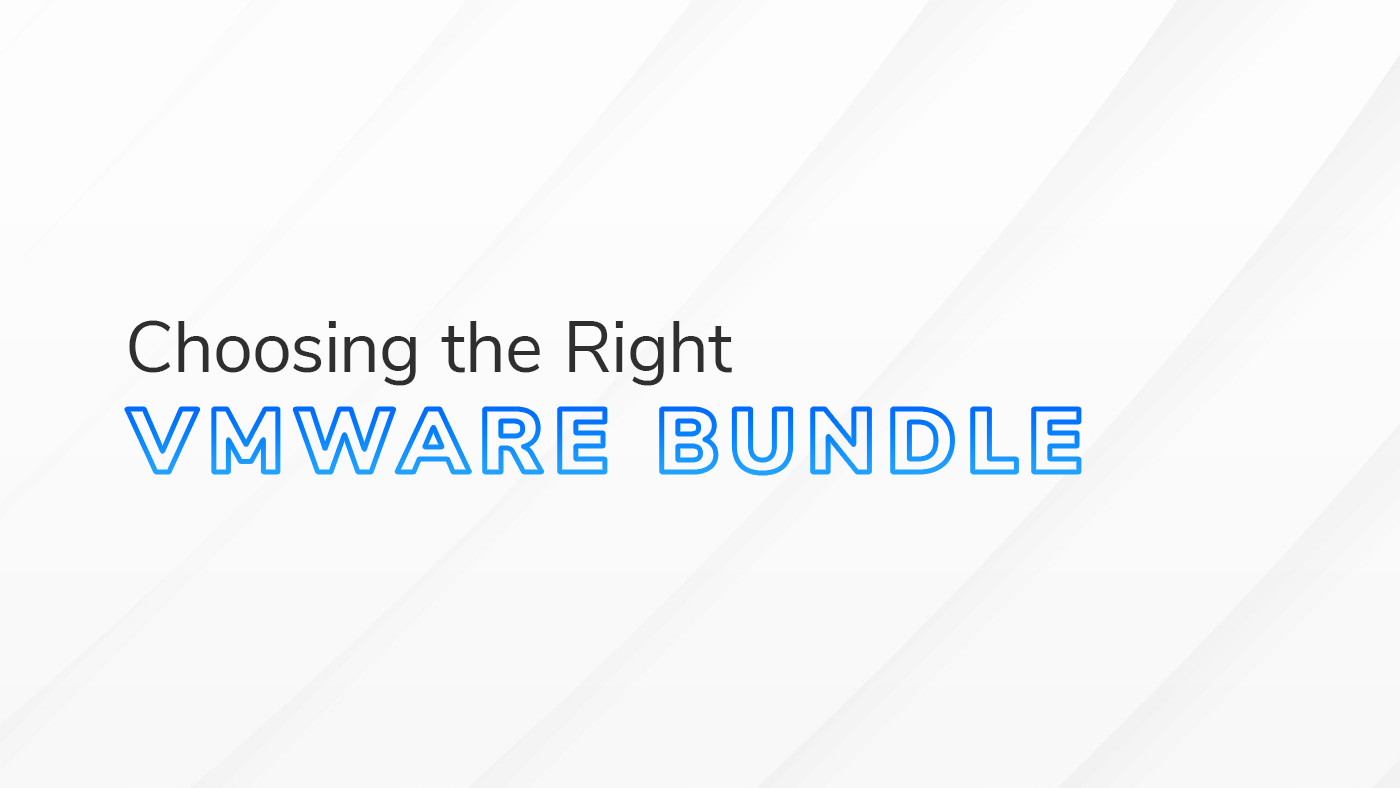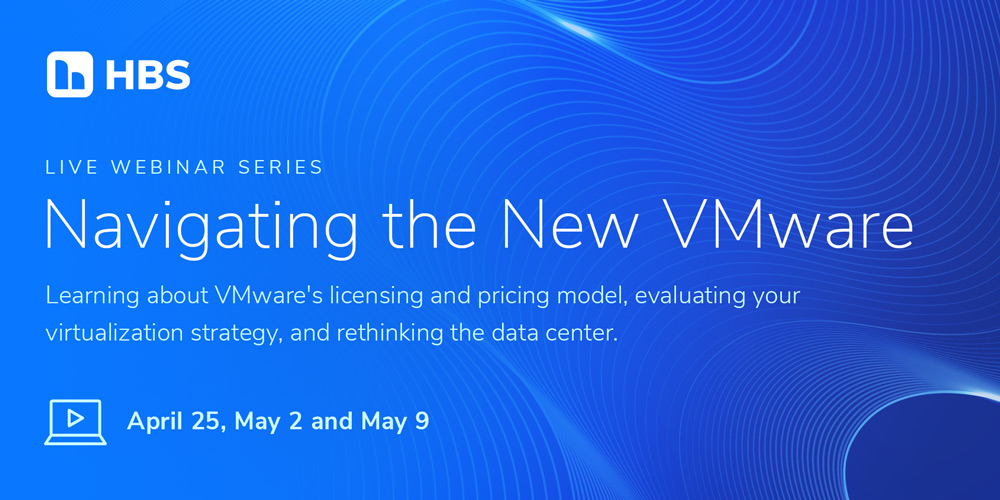VMware Alternatives: Moving to a New Virtualization Solution
- Written by: Ryan Mosher

Three Virtualization Options from HBS
If you’re part of the 45% of virtualization users running VMware, you likely have a lot of questions about Broadcom’s recent decision to change VMware’s licensing model—and what it means for your organization. The changes have many reconsidering their virtualized infrastructure and you may want to explore some VMware alternatives.
HBS is recommending three main options for you, including staying with VMware, and a pair of alternatives—Azure Local (formerly known as Azure Stack HCI) and Nutanix—two of your best choices when considering a VMware replacement.
Option 1: Staying with VMware
For some of you, the best option is to stick with VMware, particularly those organizations with significant investments in the VMware ecosystem, both in terms of infrastructure and staffing. A “rip and replace” approach might not be feasible or cost-effective.
However, VMware’s licensing changes do provide you with an opportunity to evaluate your current platform and consider future-proof alternatives.
Option 2: Nutanix
Those already using Nutanix, whether running VMware on Nutanix or using Acropolis Hypervisor (AHV) in conjunction with VMware, have a unique advantage in considering a complete transition to AHV.
When debating Nutanix vs VMware, here are a few of the compelling benefits of making the full switch to Nutanix:
- Unified platform: Simplified infrastructure stacks for compute and storage. Nutanix offers a hyperconverged infrastructure solution where everything integrates seamlessly, simplifying operations and reducing overhead.
- Streamlined management: Managing your virtualized environment across data centers, clouds, and edge locations is straightforward. Think single pane of glass management.
- Simplified operations: Nutanix is known for its user-friendly interface and automation capabilities. Provisioning VMs, patching, and troubleshooting become significantly faster and less prone to error with AHV.
- Fully unified storage: Nutanix handles storage as an integral part of the infrastructure, eliminating complexity and enhancing performance—no more worrying about compatibility issues.
- Enhanced performance and scalability: Nutanix is built for performance and scales to meet growing demands. AHV leverages this foundation to deliver optimized VM performance and smooth scaling as needed.
- Seamless integration with existing VMware environment: If you currently use VMware on Nutanix, transitioning doesn’t mean abandoning your existing VMs. Nutanix offers tools and migration paths to seamlessly move your workloads to AHV, minimizing disruption and downtime.
- Enhanced security: Nutanix prioritizes security; built-in features like micro-segmentation and encryption protect your workloads at every level.
Option 3: Azure Local
The licensing changes hit VMware Essentials clients the hardest. Azure Local stands out as a robust alternative to VMware thanks to a compelling value proposition—offering a hybrid cloud solution that combines the familiarity of Microsoft’s ecosystem with the scalability and flexibility required for modern applications.
Here’s what sets Azure Local apart:
- Hybrid cloud capabilities: Seamlessly bridge the gap between your on-premises and Azure cloud environments—manage your virtualized infrastructure through a unified platform.
- Eliminated per-core licensing: Azure Local uses a simple subscription-based approach, providing predictable costs and eliminating overspending concerns.
- Built-in disaster recovery: Ensure business continuity with built-in disaster recovery capabilities. Azure Local simplifies backup and replication, offering peace of mind in case of disruptions.
- Enhanced security: Benefit from over 300 pre-enabled security settings and Azure’s comprehensive security infrastructure—reduce the risk of breaches and ensure compliance.
- Familiar Microsoft ecosystem: Azure Local integrates seamlessly with your Windows Server infrastructure, minimizing the learning curve and simplifying management.
- Scalability and flexibility: Easily scale your infrastructure up or down to meet changing demands. Azure Local adapts to your needs, supporting diverse workloads and ensuring future-proof scalability.
- Integrated AI and analytics: Gain valuable insights into your infrastructure performance and resource utilization with built-in Azure monitoring and analytics tools. Make data-driven decisions and optimize your resources for maximum efficiency.
Don’t Be Afraid if You Have “VMware Only” Software
There is a fear of being locked into VMware because of software essential to your organization that is “VMware only.”
The fear is understandable but probably unwarranted.
The vast majority of these functionalities and software can be easily moved to a Software as a Service (SaaS) offering or an equivalent alternative product. With the right guidance and expertise (from a partner like HBS), finding alternatives won’t be a challenge.
There are options available—you don’t have to be restricted to just VMware.
Considerations for Your Virtualization Future
At HBS, we’ve been in the virtualization game for a long time, working with a wide range of clients and several different virtualization solutions. Choosing the right virtualization platform isn’t a one-and-done decision. The landscape is constantly evolving, and your needs might shift over time. That’s why partnering with a technology expert like HBS is crucial.
Our team can help you:
- Assess your current needs and environment. We’ll conduct a thorough analysis to understand your specific requirements, constraints, and budget.
- Evaluate the most suitable alternatives. We’ll compare options based on your unique needs and present unbiased recommendations.
- Develop a tailored migration plan. We’ll map out a risk-mitigated migration strategy, ensuring minimal downtime and disruption.
- Execute the migration seamlessly. Our experienced engineers will handle the entire process, ensuring a smooth transition.
HBS is here to guide you through this process, from initial consultation to final migration. Our team of experts understands the complexities of transitioning IT infrastructures and is equipped to provide personalized guidance tailored to your organization’s specific needs.
Don’t let the recent VMware changes limit your options—contact HBS today to explore your virtualization possibilities.
Related Content

VMware Changes: Understanding New VMware Licensing and Products
Explore the changes to VMware licensing and product offerings, including the shift to subscription models and streamlined portfolio.

vSphere Essentials Plus, vSphere Standard, or vSphere Foundation: Which VMware Bundle Is Right for Me?
Explore the latest VMware bundles—vSphere Essentials Plus, Standard, and Foundation—to find the perfect fit for your virtualization needs.

Navigating the New VMware
RECORDING AVAILABLE – Join us for a three-part webinar series April 25, May 2, and May 9 at 11:00 AM CST to learn about how you can navigate the VMware changes.







